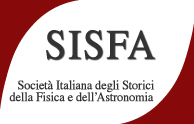Speaker
Description
Between 1782 and 1794, the London workshop of Swiss-born watchmaker Josiah Emery manufactured some forty pocket chronometers equipped with the lever escapement designed by Thomas Mudge. According to contemporaries, these watches were the most accurate on the market. Although they were the result of technical research that accompanied the emergence of marine chronometry in the second half of the 18th century, they were primarily intended for geodesy surveying.
Their very high price severely limited their distribution within the scientific community: these timepieces were mainly owned by wealthy amateurs and a handful of astronomers. A few scientists took on the task of promoting, selling and testing Emery watches in Europe, including Italy. Our paper will focus on the most important of them, Count Hans-Moritz de Brühl, ambassador to the Saxon court in London. A leading figure in the London horological and astronomical world, the nobleman acted as Emery main go-between. To analyse his fundamental role, we will refer to the nobleman’s scientific correspondence, which is held in the National Records of Scotland.
Emery timepieces benefited from de Brühl’s money, network and intuition, as he realized the advantage of miniaturizing the lever escapement, that its designer had destined to disappear. By keeping Mudge’s invention alive, Emery chronometers constitued the very first stage in the triumph of an innovation that would deeply mark the history of watchmaking forever more. From the second half of the 19th century, the lever escapement became the industry standard, and its monopoly is still indisputable today.

